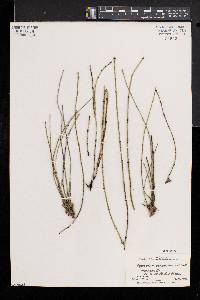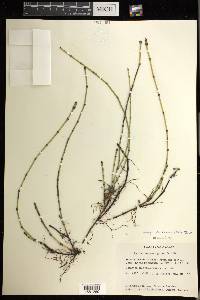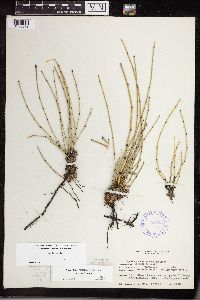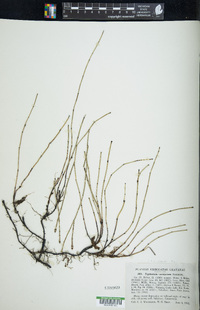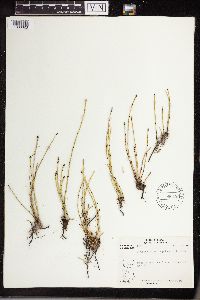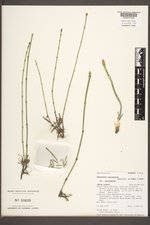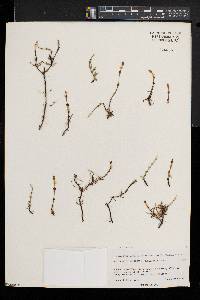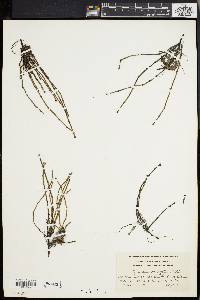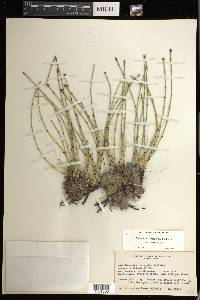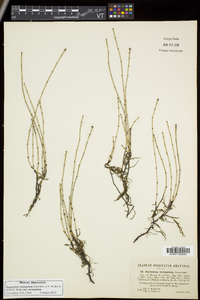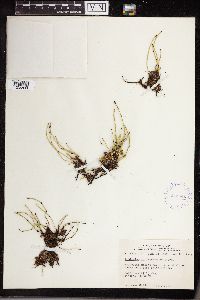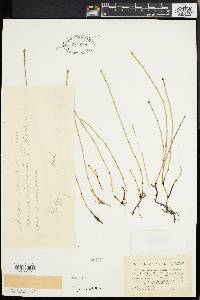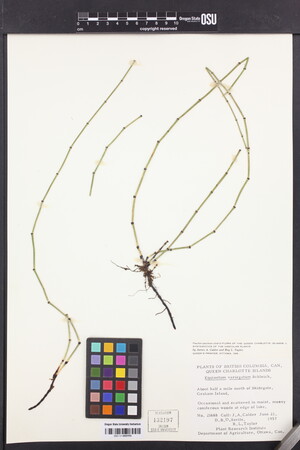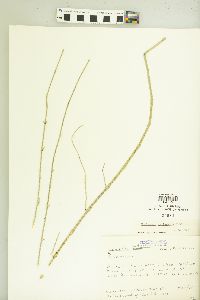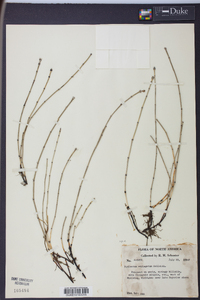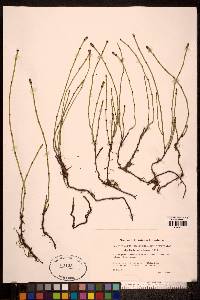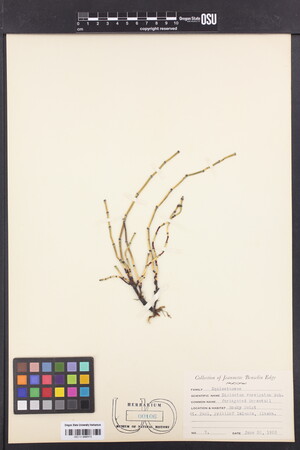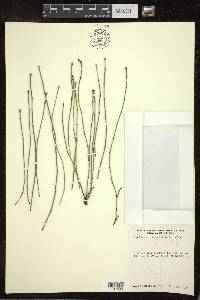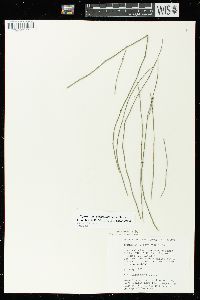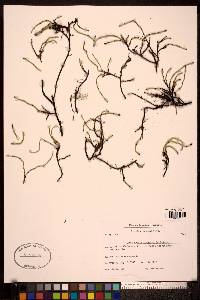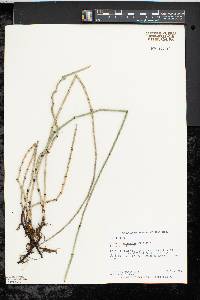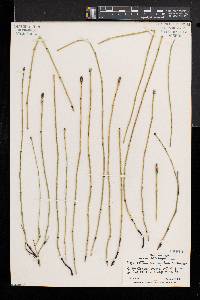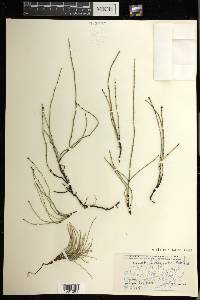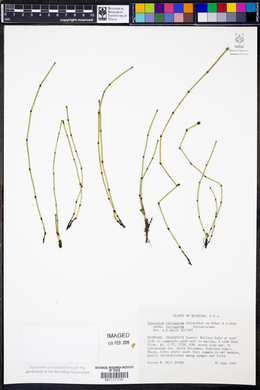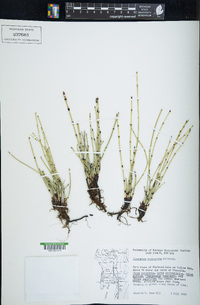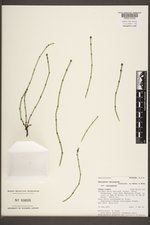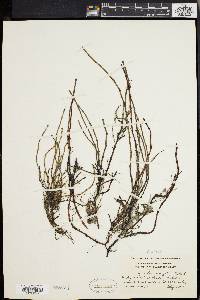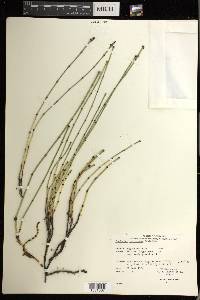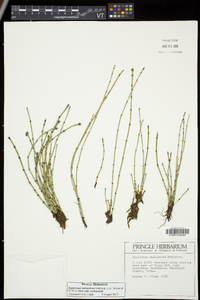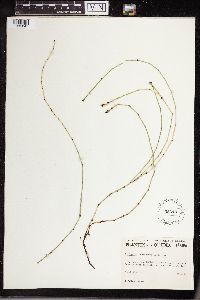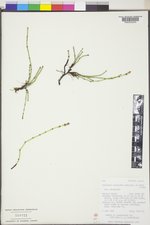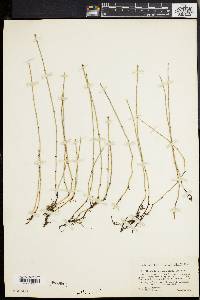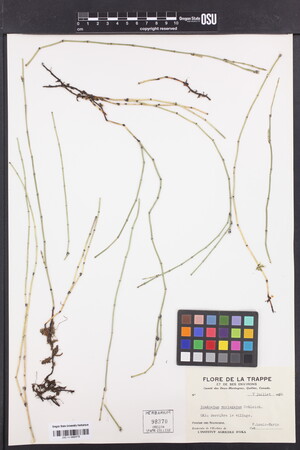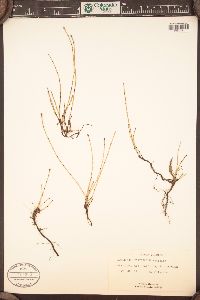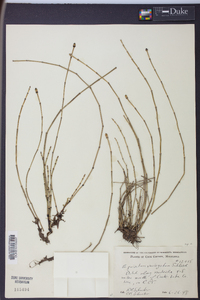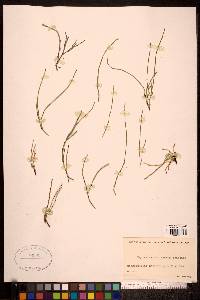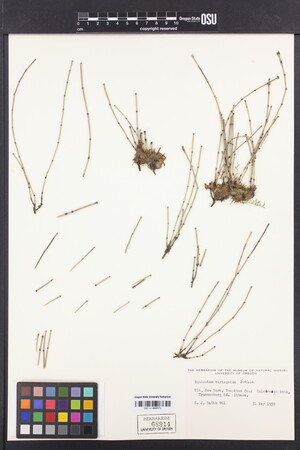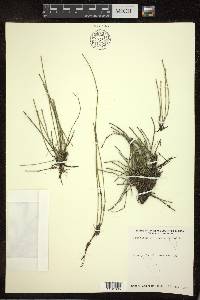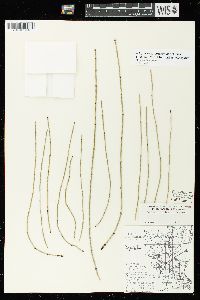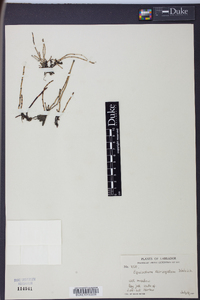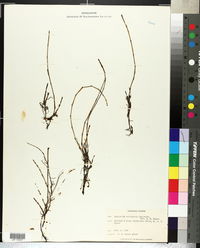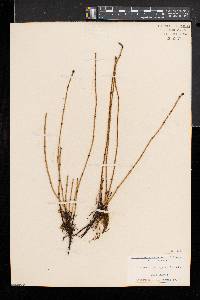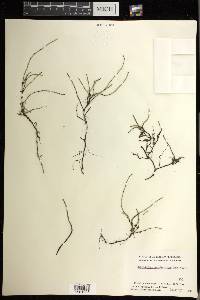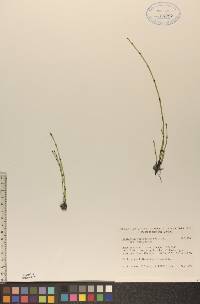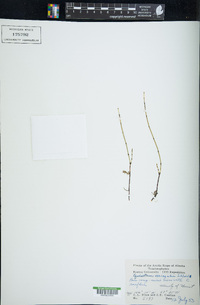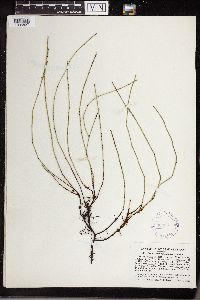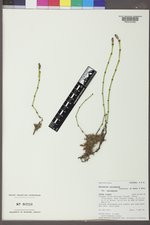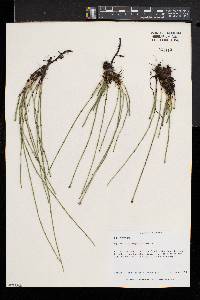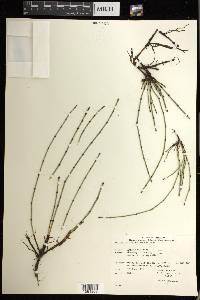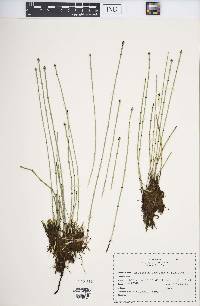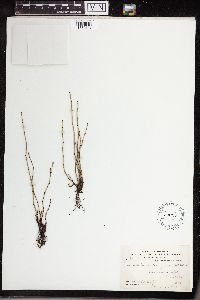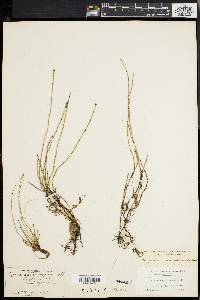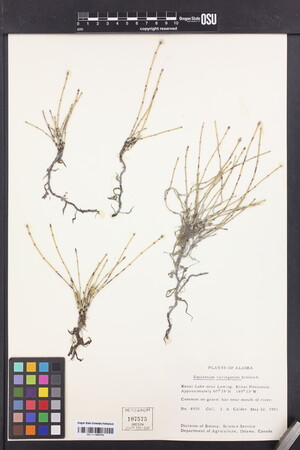Equisetum variegatum
|
|
|
|
Family: Equisetaceae
variegated horsetail, more...Variegated Scouring-Rush
|
Perennial herbaceous fern ally 6 - 48 cm tall Spores: green, spheric, and released from lengthwise slit in spore sacs (sporangia). Stems: one to several, erect, straight, unbranched, green (usually persisting over winter), round with hollow center and three to twelve lengthwise rows of grooved, rough ridges with alternating valleys on outside. The stem joints have distinct nodes, and the stomates are sunken and arranged in single lines on each side of the stem valleys. Sheaths: green with black band near top, 1 - 6 mm long, 1 - 5 mm wide, somewhat spreading upwards. The sheaths are actually small, fused, whorls of leaves. Sheath teeth: three to twelve, erect, persistent, with a white area between dark tips and black band at top of sheath. Similar species: Equisetum variegatum is most similar to E. laevigatum, but that species has flattened grooves on the stem ridges so they are smooth, the teeth of the stem sheaths are shed early, and the cone tip is rounded or at least blunt if abruptly narrowed. Equisetum hyemale ssp. affine is also quite similar, but differs by having more square stem sheaths in face view, dark girdles at the base of all the stem sheaths, and many more teeth on the stem sheaths (up to 50) though they are often shed. The hybrid with E. hyemale ssp. affine is E. x mackaii, which can be differentiated by its dark-girdled stem sheaths, and white and misshapen spores. The hybrid with E. laevigatum, E. x nelsonii, can be differentiated mostly just by its white, misshapen spores. Members of the other subgenus have clearly rounded cones on the unbranched fertile stems, the vegetative stems have branches, and the stomates are neither sunken nor arranged in distinct rows or lines. Habitat and ecology: Not very common, mostly localized to moist sandy soils, especially in areas close to Lake Michigan such as pannes, as well as in fens. Occurence in the Chicago region: native Notes: This plant commonly has the aboveground stems surviving for more than one year. Often the spores survive on the plant over winter and are shed in the spring. There are two subspecies of this species, but all of the plants in the Chicago Region are the typical subspecies. The other subspecies occurs in very northwestern Washington, British Columbia, and Alaska. Etymology: Equisetum comes from the Latin words equus, meaning horse, and saeta, meaning bristle. Variegatum means variegated (two-toned) in reference to the stem sheaths which are dark near the top, then white on part of the teeth, and then dark again at the black tips of the teeth. Author: The Field Museum Stems all alike, evergreen, ascending or erect, 1-3 dm, 1-2.5 mm thick, branched near the base, 5-12-ridged, the ridges shallowly furrowed and with 2 rows of siliceous tubercles; central cavity 1/4-1/3 the diameter of the stem, mostly larger than the 5-12 vallecular ones, stomates in 2 rows in each principal furrow; sheaths mostly 2-5 mm, poorly marked at the base, slightly flared upwards, green, with an apical blackish band, the body of each tooth 1-2 mm with a black or blackish, 2-ridged midstripe and conspicuous white-hyaline margins, rather abruptly contracted to a hair-like deciduous tip 0.5-1 mm; cones small, scarcely 1 cm, subsessile, apiculate. Wet thickets, bogs, and sandy shores; circumboreal, in Amer. s. to Pa., Ill., Minn., and Colo. Ours is var. variegatum. Gleason, Henry A. & Cronquist, Arthur J. 1991. Manual of vascular plants of northeastern United States and adjacent Canada. lxxv + 910 pp. ©The New York Botanical Garden. All rights reserved. Used by permission. |







